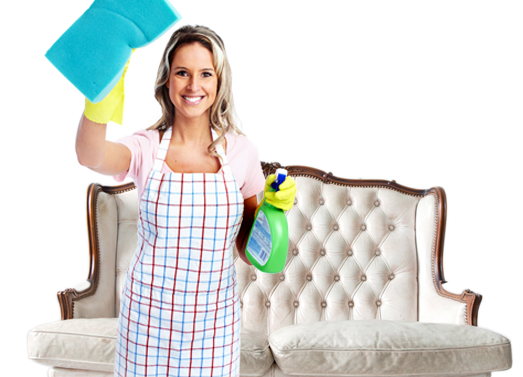Proven Practices to Remove Mould from Sills
Posted on 12/06/2025
Proven Practices to Remove Mould from Sills
Mould is an unwelcome guest in any home, especially when it grows on window sills. Not only does mould look unsightly and generate unpleasant odours, but it can also contribute to health problems such as allergies and asthma. The good news is that with the right knowledge and approach, you can remove mould from sills efficiently and prevent its recurring invasion. In this comprehensive guide, we'll cover proven methods for cleaning and eliminating mould from window sills, discuss why it forms, offer prevention strategies, and answer frequently asked questions.

Why Does Mould Develop on Sills?
Mould thrives in environments that combine moisture, organic material, and lack of ventilation. Window sills often become hotspots for mould growth because condensation gathers on glass and drips downward, dampening the surrounding areas. Dirt, dust, and even traces of food can provide nutrients for mould spores. Here are key factors contributing to the formation of mould on sills:
- Constant or recurring moisture from condensation or leaks
- Organic debris like dust, pollen, or wood fibres
- Poor airflow and inadequate sunlight
- Temperature fluctuations causing dew and dampness
Understanding why mould appears is the first step in effectively removing it and ensuring it doesn't return.
Health Risks Associated with Mould on Sills
Living with mould can be hazardous. Exposure to mould spores on window sills may cause:
- Allergic reactions (sneezing, itchy eyes, rashes)
- Asthma attacks and respiratory difficulties
- Sinus congestion and headaches
- Weakened immune response, especially in children and the elderly
For these reasons, it's essential to tackle mould on sills as soon as you notice it.
Top-Rated Methods to Remove Mould from Sills
Several proven techniques are available for removing mould from window sills. Each method can be tailored to your specific situation, depending on the severity of the mould, sill material, and your available supplies. Below are the most effective steps and solutions.
Preparing the Area Before Mould Removal
- Open windows or provide good ventilation to minimize inhaling mould spores.
- Wear gloves, a mask, and protective goggles.
- Lay out old towels or plastic sheets to protect the floor.
- Remove curtains, blinds, or objects from the area for thorough access.
- Dispose of heavily infested furnishings safely to prevent spore spread.
1. Using Vinegar - A Natural Mould Remover
White vinegar contains mild acid that kills over 80% of mould species. It's an eco-friendly, gentle, and affordable way to remove mould from sills.
- Pour undiluted white vinegar into a spray bottle.
- Spray the affected areas on the sill generously.
- Wait at least 1 hour for the vinegar to penetrate the mould.
- Wipe clean with a damp microfiber cloth or disposable paper towels.
- For stubborn stains, scrub gently with a soft-bristled brush.
Repeat if necessary until all visible mould is gone.
This method works particularly well for wooden, PVC, and painted window sills.
2. Baking Soda Solution
Baking soda is another trusted, non-toxic option for cleaning mould from sills, especially when combined with vinegar.
- Mix 1 teaspoon of baking soda with 2 cups of water in a spray bottle.
- Shake the bottle until the powder dissolves.
- Spray onto the mouldy sill and scrub lightly with a brush.
- For extra cleaning power, sprinkle additional baking soda directly on tough stains before scrubbing.
- Wipe away the residue with a clean, damp cloth.
Baking soda also helps deodorize and prevent future mould regrowth.
3. Hydrogen Peroxide Treatment
Hydrogen peroxide (3%) is a powerful antimicrobial that kills mould and disinfects at the same time.
- Fill a spray bottle with undiluted hydrogen peroxide (3%).
- Spray onto the affected sections of the window sill.
- Let it sit for 10-15 minutes.
- Scrub with a brush or sponge if necessary.
- Rinse with water and dry thoroughly.
Caution: Test first on an inconspicuous spot, as hydrogen peroxide might bleach some colored surfaces.
4. Commercial Mould Cleaners
Many products are specifically designed for removing mould from sills and other household surfaces. Look for cleaners with "mould remover" or "fungicide" labels.
- Follow all manufacturer's safety instructions.
- Ensure the room is well ventilated to dissipate chemical fumes.
- Wear gloves and eye protection when using strong chemicals.
- Apply with a cloth or sponge and leave for recommended time before wiping away.
Commercial cleaners are fast and effective for heavily infested or hard-to-reach sills.
5. Applying Bleach for Severe Infestations
Bleach is a potent mould remover for sills, particularly when the infestation is extreme or on non-porous surfaces like tiles or PVC.
- Mix 1 part bleach with 10 parts water in a bucket.
- Apply with a soft cloth or sponge (never spray bleach as it can mist and become inhaled).
- Let it sit for 10 minutes.
- Rinse with clean water and dry thoroughly.
Important: Avoid using bleach on wood, as it can damage and discolor the material.
6. Removing Mould from Sills Made of Different Materials
Sills are made from various materials, and the cleaning method may need to be adjusted accordingly:
- Wooden Window Sills: Use minimal water to avoid swelling; vinegar or specialized wood-safe mould cleaners are best.
- uPVC and Vinyl Sills: Most cleaning agents, including diluted bleach, are safe. Avoid abrasive methods that can scratch.
- Marble, Stone or Tile: Hydrogen peroxide or commercial cleaners work well. For grout, consider a soft brush and baking soda.
- Painted Surfaces: Test all solutions first for colorfastness.
How to Prevent Mould from Returning to Window Sills
Once you've successfully cleaned mould from your sills, take proactive steps to make sure it doesn't re-establish itself. Prevention is key.
Tips for Long-Term Mould Prevention on Sills
- Control humidity levels: Use a dehumidifier in problem areas, especially during humid months.
- Improve ventilation: Open windows regularly, install trickle vents, or use extractor fans.
- Fix leaks immediately: Be alert to drips from windows, pipes, or the roof. Prompt repairs prevent water buildup.
- Wipe window sills regularly: Remove condensation, dust, and dirt with a dry or slightly damp cloth.
- Use anti-mould paint: Consider repainting window sills and reveals with mould-resistant formulas.
- Increase sunlight exposure: Sunlight is a natural mould inhibitor. Leave curtains open during the day whenever possible.
- Monitor indoor plants near windows: Excess watering or poor drainage can raise humidity and feed mould.
Consistency with these practices will dramatically reduce the likelihood of mould growing on your sills.
When Should You Call a Professional?
While DIY methods are safe and effective for most household mould, some situations require expert intervention:
- The infestation is extensive or covers a large area.
- Mould keeps returning despite your best efforts.
- Mould is growing behind sills, walls, or frames (hidden mould).
- You or your family have health concerns exacerbated by mould exposure.
- There is water damage, rot, or structural concerns.
Professional mould remediation specialists have the knowledge, advanced cleaning agents, and equipment needed for large-scale infestations.

Frequently Asked Questions (FAQ)
Is it safe to remove mould from sills myself?
Yes, if the mould covers a small area (less than one square meter) and you are healthy, using gloves, a mask, and the right products should be safe. For larger problems, consult an expert.
Will removing mould from sills damage my paint or wood?
If you use appropriate cleaners and avoid harsh abrasives, most modern paints and finished wood can be safely cleaned. Always spot-test first, and never soak wooden sills.
Can I prevent mould using home remedies?
Absolutely. Controlling moisture and keeping sills clean with regular dusting, drying, and using natural solutions like vinegar and baking soda keeps mould at bay.
What should I do about mouldy sealants around window sills?
Sometimes, old sealants must be removed and replaced. Clean the area thoroughly, allow it to dry, and apply new mould-resistant caulk.
Does repainting window sills prevent mould?
Repainting with anti-mould paint helps protect against mildew but is only effective when combined with proper humidity control and cleaning.
Conclusion: Enjoy Clean, Mould-Free Sills with Proven Methods
Mould on window sills is not just an eyesore--it's a potential health risk. By understanding the causes, acting quickly with proven cleaning methods like vinegar, baking soda, hydrogen peroxide, or commercial products, and practicing long-term prevention, you can remove mould from your sills and keep it from coming back. Consistency is the key: stay vigilant, control moisture, and maintain clean, dry conditions around your window sills.
For a healthy, safe, and beautiful home, start with your sills--because banishing mould means breathing easier and living better.
- Remove mould from sills with natural or commercial cleaners
- Protect your family's health by keeping indoor air clean
- Ensure your window sills are a shining example of home hygiene
Have questions or your own tricks for tackling mould? Share your experiences below and help others in the fight for a cleaner, mould-free living space!




